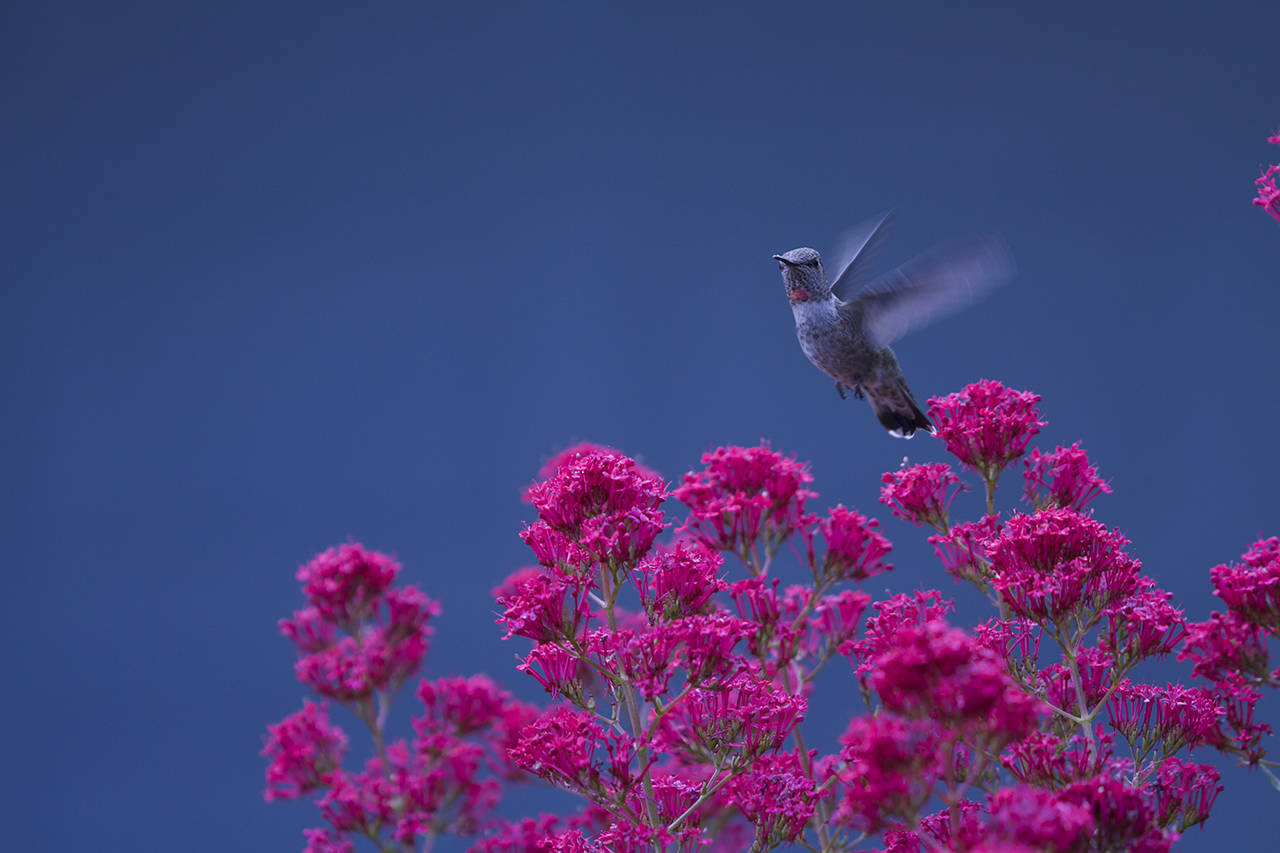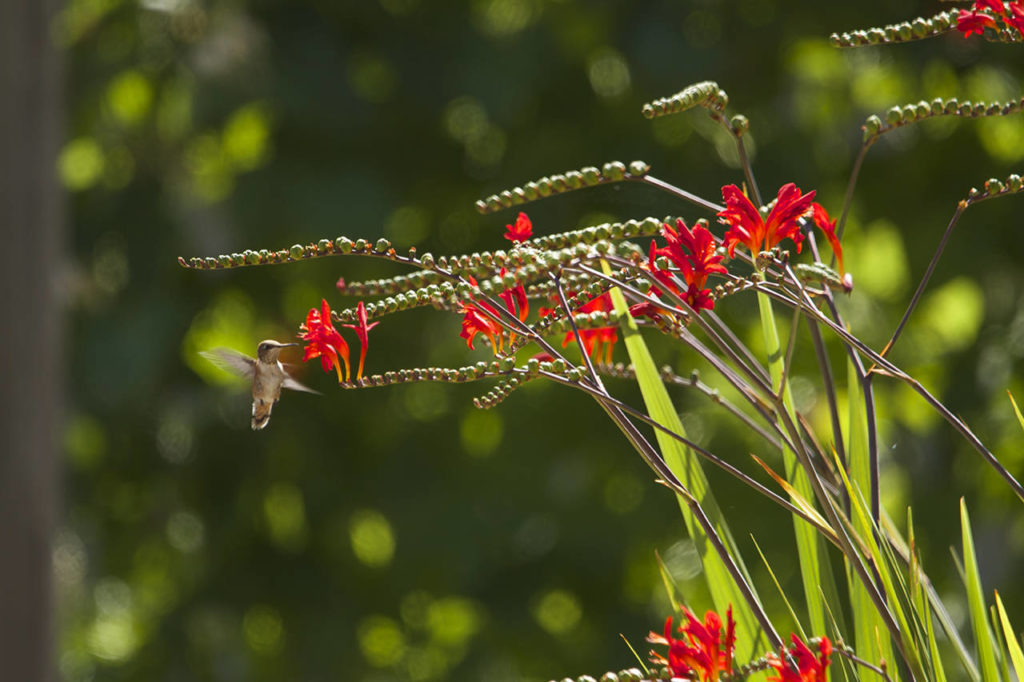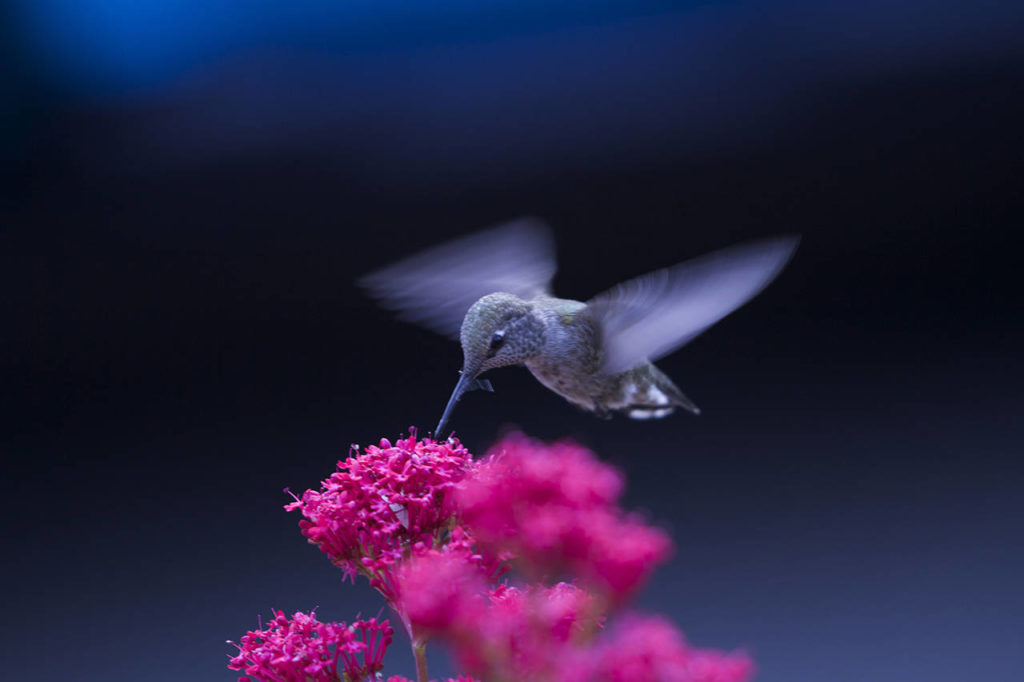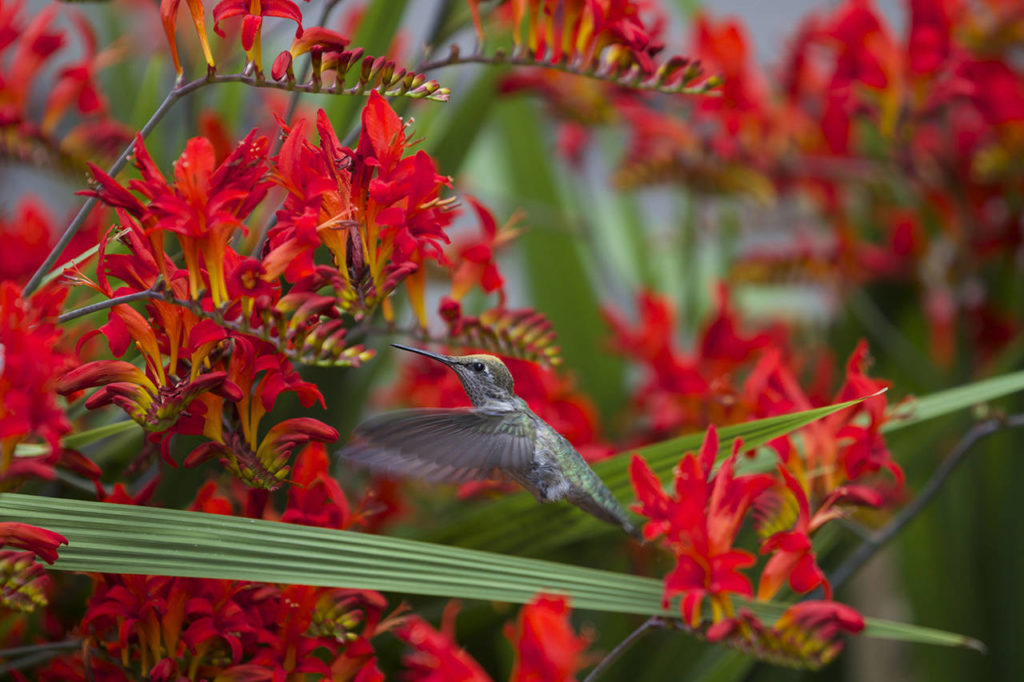The best time to watch hummingbirds in Washington is the summer.
The summertime is when the tiniest of birds fatten up for their long and exhausting migration south — but not all hummingbirds migrate. The Anna’s hummingbirds are year-round residents here.
Inez Lawrence, of Tulalip, makes sure flowers and feeders are readily available for her hummers. She puts out feeders for her hummingbirds in the winter. In the summer, she adds a hanging basket of fuchsias nearby.
“They’re feeding constantly and they seem to like anything that has nectar,” said Lawrence, who is a retired librarian.
“They don’t leave,” she said. “They’re here all the time.”
Washington plays host to four species of hummingbird. The four that can be seen in this state are the rufous and Anna’s, in Western Washington, and calliope and black-chinned, in Eastern Washington. You might rarely see broad-tailed or Costa’s hummingbirds and, even rarer still, Xantus’s hummingbirds.
Dick Snow, of Marysville, likes to do more for the hummingbirds when he can. So last year, he planted some flowering crocosmias in front of the picture window in his living room. The scarlet flowers are beautiful, and they are also regularly visited by the neighborhood hummingbirds.
Snow, a retired teacher, enjoys watching the tiny birds flit in and out.
He and his wife, Jill, like to have lunch on their back patio some days and watch the hummingbirds. He said they’re notoriously territorial, and he also likes watching their aerial battles with each other.
The birds like taking a bath, and Snow said they’ll sometimes fly into a misting spray from his hose as he waters the plants in the yard.
Lawrence and Snow aren’t the only ones who find it worth the effort to put out feeders and to add flowering plants to their garden to make the birds feel more at home.
Snow said the feeders take little effort, even in winter, and he doesn’t mind adding their favorite plants around the yard. Even vegetable gardens can be made hummingbird friendly.
I have a neighbor across the street from my house who scatters a few flowers around and has some flowering beans, LaVonne’s heirloom beans, that the hummers go crazy over.
Hummingbirds like a wide variety of blossoms, so it’s not difficult to plant a few favorites around your house and garden. The key is to find flowering plants that are nectar-rich.
Voracious feeders, Hummingbirds are attracted by bright colors, especially red. They also seem to prefer flowers that are tubular in shape.
Here are 10 plants that attract hummingbirds:
Crocosmia lucifer: A native of Africa, crocosmia lucifer is a relative of the iris family and produces a bright, scarlet flower.
Fuchsia: With more than 100 species, fuchsias are widely available and ideal for hanging baskets that you can place near a window.
Gladiolus: Glads come in a wide variety of colors that brighten any garden. They can be a little fragile and should be staked up to help they to stand up.
Trumpet vines: Sometimes referred to as hummingbird vines, these southern natives are fairly hardy perennials.
Snapdragons: A brightly colored, classic annual, snapdragons are a good plant for containers and a good plant to provide nectar for bees as well as hummingbirds.
Red columbine: A fairly easy to grow perennial, red columbine is perfect for rock gardens. Bees and butterflies like it as well as hummingbirds.
Red cardinal: This Midwest native wildflower puts out brilliant red blooms that are trumpet-shaped. Hummingbirds like them, and the birds help pollinate the plants.
Lantana camara: This flowering shrub-sized perennial works well in containers or rock gardens and is well-liked by hummingbirds and bees.
Rose of Sharon: It’s not a rose, but some varieties can look a bit like one. A sizable bush, it delivers flowers well into the fall.
Salvia greggii: One of many Salvias that attract hummingbirds, this variety puts out reddish blooms from spring into fall and is a real hummingbird magnet.
Talk to us
> Give us your news tips.
> Send us a letter to the editor.
> More Herald contact information.





























